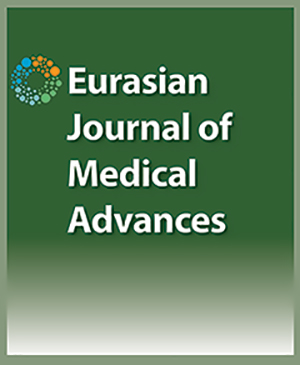

A Case of Dysphagia and Dysphonia Caused by Diffuse Idiopathic Skeletal Hyperostosis
Ahmet Hamdi Kepekci1, Hidayet Sarı21Yeni Yuzyil University, Health Occupation High-School Audiometry; Department of Otolaryngology, Meltem Hospital, Istanbul, Turkey, 2Department of Physical Therapy and Rehabilitation, Istanbul University, Istanbul, Turkey,
This report describes a case of diffuse idiopathic skeletal hyperostosis (DISH) leading to dysphagia and dysphonia. DISH causes fibrosis in the ligaments, tendons, and joint capsules, and eventually, secondary osteophytes. DISH is more common in men than women, and is typically seen in those over the age of 50. A 75-year-old female patient who had been diagnosed with DISH presented at the ear, nose, and throat polyclinic for dysphagia and dysphonia, as well as back and neck pain. Endoscopic examination of the larynx revealed a protrusion at the posterior wall of the hypopharynx. Computed tomography (CT) scanning of the larynx and cervical region and a barium swallow were performed. The CT scan showed large osteophytes originating in the anterior part of the second and third cervical vertebrae that were suppressing the laryngeal structures and the epiglottis. The swallow graphy also indicated suppression and partial blockage of the esophageal passage. The protruding osteophytes had damaged the recurrent laryngeal nerve and caused recurrent laryngeal neuropathy and esophageal inflammation, and fibrosis led to dysphagia and dysphonia. Treatment with oral anti-inflammatory drugs and physiotherapy was initiated and surgical excision of the osteophytes was suggested. In the differential diagnosis of dysphagia and dysphonia, an endoscopic examination of the larynx and the posterior wall of the hypopharynx should be performed, and it is important to consider DISH. Furthermore, a multidisciplinary approach including physiotherapy, neurology, and other related clinics, is essential.
Cite This Article
Kepekci A, Sarı H. A Case of Dysphagia and Dysphonia Caused by Diffuse Idiopathic Skeletal Hyperostosis. EJMO. 2017; 1(4): 237-239
Corresponding Author: Ahmet Hamdi Kepekci



